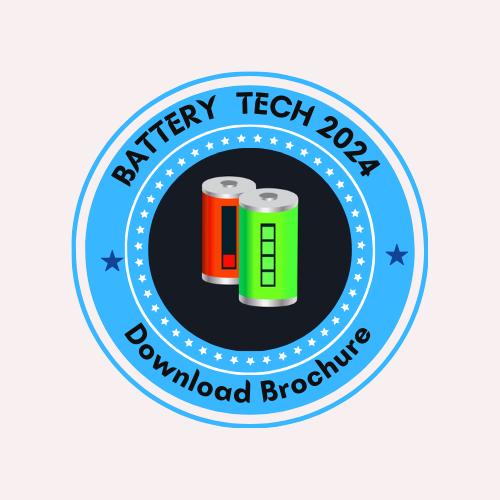Global Outlook of Fuel Cell
A fuel cell main function is to that transforms the chemical energy from a fuel into power through a chemical reaction of positively charged hydrogen ions with oxygen or alternative oxidizing agent. Fuel cells are dissimilar from batteries in that they require a constant source of fuel and oxygen or air to withstand the chemical reaction, while in a battery the chemicals existing in the battery react with each other to produce an electromotive force. Fuel cells can generate electrical energy continuously for as long as these inputs are delivered. Fuel cells come in multiple types; however, they all work in the same common way. They are made up of three contiguous divisions: the anode, the electrolyte, and the cathode. Two chemical reactions occur at the boundaries of the three unlike divisions. The net outcome of the two reactions is that fuel is disbursed, water or carbon dioxide is produced, and an electric current is generated, which can be used to power electrical devices, normally referred to as the load.
Related Conference of Global Outlook of Fuel Cell
9th International Conference on Nanomedicine and Nanotechnology
34th International Conference on Nanomedicine and Nanomaterials
41st International Conference on Advanced Nanotechnology & Nano Electronics
Global Outlook of Fuel Cell Conference Speakers
Recommended Sessions
- Nanotechnology in Advance Batteries
- Primary Cell Batteries
- Applications of Batteries
- Applications of Fuel cells
- Batteries in Renewable Sources and Grid Balancing
- Classifications of Fuel Cell
- Design and Technology of Batteries
- General Aspects of Battery
- Global Outlook of Fuel Cell
- Latest Developments of Batteries
- Operation Problems in Batteries
- Recent Advancements in Fuel Cell Technology
- Secondary Cells Batteries
- Supercapacitors vs Batteries
- Various Energy Materials
Related Journals
Are you interested in
- 2D Materials in Nano Electronics: Beyond Graphene - Advanced Nano 2026 (France)
- Advanced Nano Fabrication, Lithography & Patterning Technologies - Advanced Nano 2026 (France)
- Advanced Nanomaterials - Nanomaterials 2026 (UK)
- Advanced Nanomaterials & Functional Surfaces - Nano 2026 (UK)
- AI-Integrated Nanotechnology & Future Systems - Nano 2026 (UK)
- Applications of Nanomaterials - Nanomaterials 2026 (UK)
- Applications of Nanotechnology - Nanomaterials 2026 (UK)
- Artificial Intelligence for Nano Design & Characterization - Advanced Nano 2026 (France)
- Bio-Nanotechnology & Molecular Engineering - Nano 2026 (UK)
- Bio-Nanotechnology & Nano Interfaces with Living Systems - Advanced Nano 2026 (France)
- Biomedical Nanomaterials - Nanomaterials 2026 (UK)
- Carbon Nanotube & Nanowire Electronics for Ultra-Dense Circuits - Advanced Nano 2026 (France)
- Carbon Nanotubes & Graphene Innovations - Nano 2026 (UK)
- Characterization & Properties of Nanomaterials - Nanomaterials 2026 (UK)
- Energy Nanotechnology & Storage Solutions - Nano 2026 (UK)
- Environmental Nanotechnology & Remediation - Nano 2026 (UK)
- Future Trends in Nano Electronics & Industry Translation - Advanced Nano 2026 (France)
- High-Performance Nano-MEMS & Nano-Actuators - Advanced Nano 2026 (France)
- Materiomics - Nanomaterials 2026 (UK)
- Nano Devices & Systems - Nanomaterials 2026 (UK)
- Nano Electronics for 5G, 6G & Next-Gen Communication Networks - Advanced Nano 2026 (France)
- Nano Electronics Security, Privacy & Anti-Tamper Technologies - Advanced Nano 2026 (France)
- Nano Robotics & Molecular-Scale Machines - Advanced Nano 2026 (France)
- Nano Sensors, Nano Biosensors & Ultra-Sensitive Detection - Advanced Nano 2026 (France)
- Nano-Coatings & Surface Modification - Nano 2026 (UK)
- Nano-Electronics & Quantum Devices - Nano 2026 (UK)
- Nano-Enabled Energy Harvesting and Storage Systems - Advanced Nano 2026 (France)
- Nano-Enabled Flexible, Stretchable & Wearable Electronics - Advanced Nano 2026 (France)
- Nano-Medicine & Targeted Drug Delivery - Nano 2026 (UK)
- Nano-Robotics & Intelligent Systems - Nano 2026 (UK)
- Nano-Sensors & Smart Diagnostics - Nano 2026 (UK)
- Nanocosmetics - Nanomaterials 2026 (UK)
- Nanoelectronic Devices - Nanomaterials 2026 (UK)
- Nanofabrication & Nanoscale Engineering - Nano 2026 (UK)
- Nanomaterial Safety & Regulatory Affairs - Nanomaterials 2026 (UK)
- Nanomedical Devices - Nanomaterials 2026 (UK)
- Nanoparticles - Nanomaterials 2026 (UK)
- Nanophotonics & Optoelectronic Applications - Nano 2026 (UK)
- Nanophotonics, Plasmonics & Light-Manipulating Nano Devices - Advanced Nano 2026 (France)
- Nanoscale Materials - Nanomaterials 2026 (UK)
- Nanostructures - Nanomaterials 2026 (UK)
- Nanotech Consumer Products - Nanomaterials 2026 (UK)
- Nanotechnology for Smart, Adaptive, and Self-Healing Materials - Advanced Nano 2026 (France)
- Nanotechnology in Space, Aerospace & Extreme Environments - Advanced Nano 2026 (France)
- Nanotoxicology & Safety Assessment - Nano 2026 (UK)
- Nanoymes - Nanomaterials 2026 (UK)
- Neuromorphic Nano Electronics & Brain-Inspired Architectures - Advanced Nano 2026 (France)
- Polymer Nanocomposites & Advanced Materials - Nano 2026 (UK)
- Quantum-Driven Nano Devices for Next-Generation Computing - Advanced Nano 2026 (France)
- Spintronics, Magnetoresistance & Nano Magnetic Devices - Advanced Nano 2026 (France)
- Sustainable Nanotechnology & Green Nano Manufacturing - Advanced Nano 2026 (France)

